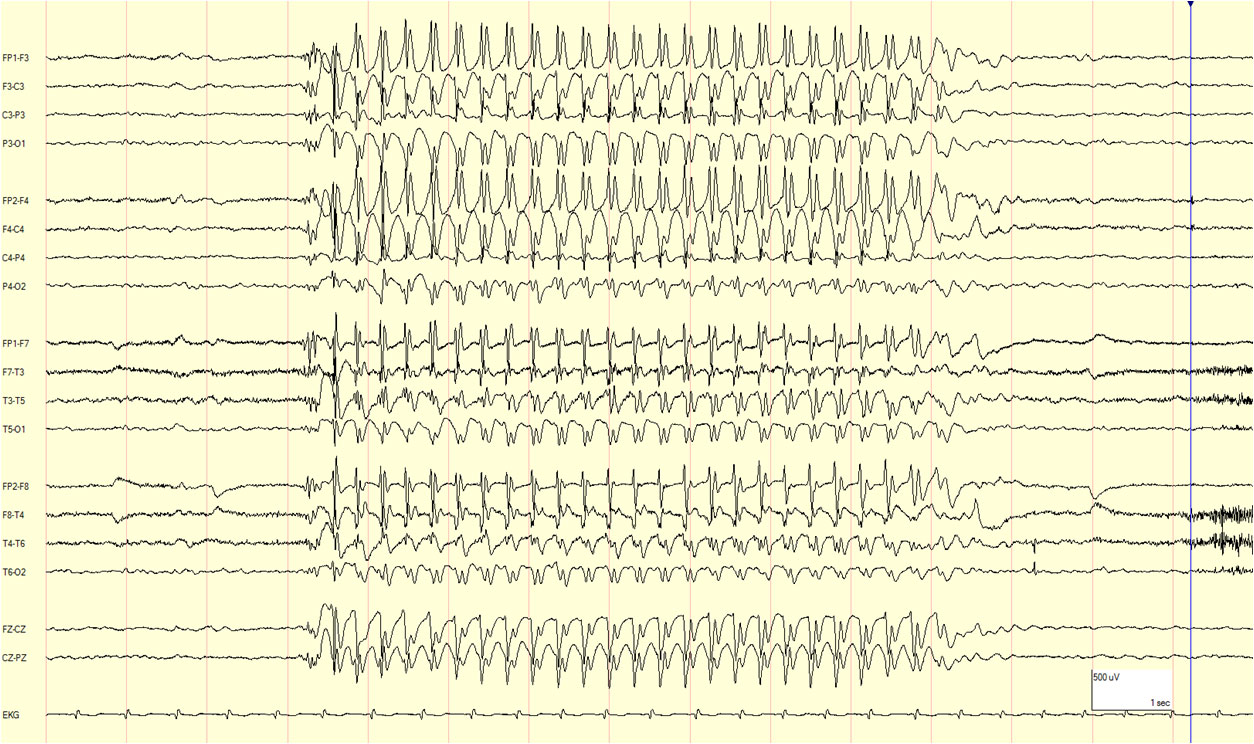

- Overview
- Log In For Videos
- Give Feedback
- Seizure Classification
- Unknown Onset Seizure
- Neonatal Seizure
- Epilepsy Classification
- Generalized Epilepsy
- Focal Epilepsy
- Generalized and Focal Epilepsy
- Unknown Epilepsy
- Epilepsy Syndromes
- Epilepsy Etiologies
- Metabolic Etiologies
- Immune Etiologies
- Infectious Etiologies
- Unknown Etiologies
- Encephalopathy
- Epilepsy imitators
CHILDHOOD ABSENCE EPILEPSY (CAE)
Background
The background is normal. Occipital intermittent rhythmic delta activity (OIRDA) may be seen in around 20% of cases.
CAUTION Focal slowing seen consistently in one area  consider structural brain abnormality.
consider structural brain abnormality.
CAUTION Generalized slowing is not seen.
Interictal
2.5-4Hz generalized spike-wave, or fragments of generalized spike-wave are seen in the interictal EEG. These are brief (usually <2 second) and most commonly seen in sleep.
CAUTION Although focal
spikes (as fragments of generalized spike-wave) can occur, if
they consistently arise in one area  consider structural brain abnormality.
consider structural brain abnormality.
Activation
EEG abnormality and absence seizures are provoked by hyperventilation. If hyperventilation is poorly performed, generalized spike-wave may not be seen.
Intermittent photic stimulation provokes generalized spike-wave in 15-20% of individuals but does not provoke seizures.
EEG abnormality is enhanced by sleep deprivation, in drowsiness and in sleep. Generalized spike-wave often becomes fragmented with sleep deprivation or in sleep. Fragmented generalized spike-wave can appear focal or multi-focal but usually is not consistently seen in one area. The morphology of the focal spike-wave typically appears similar to the generalized spike-wave.
CAUTION Where hyperventilation is performed well for three minutes and no generalized spike-wave is seen in an untreated patient, childhood absence epilepsy is excluded.
Ictal
Regular 3Hz (range 2.5-4Hz) generalized spike-wave occurs associated with absence seizures. Polyspike-wave can occur in the ictal EEG.
CAUTION Slow spike-wave (<2.5Hz) is exclusionary.

Example of 3Hz generalized spike-wave seen on the ictal EEG